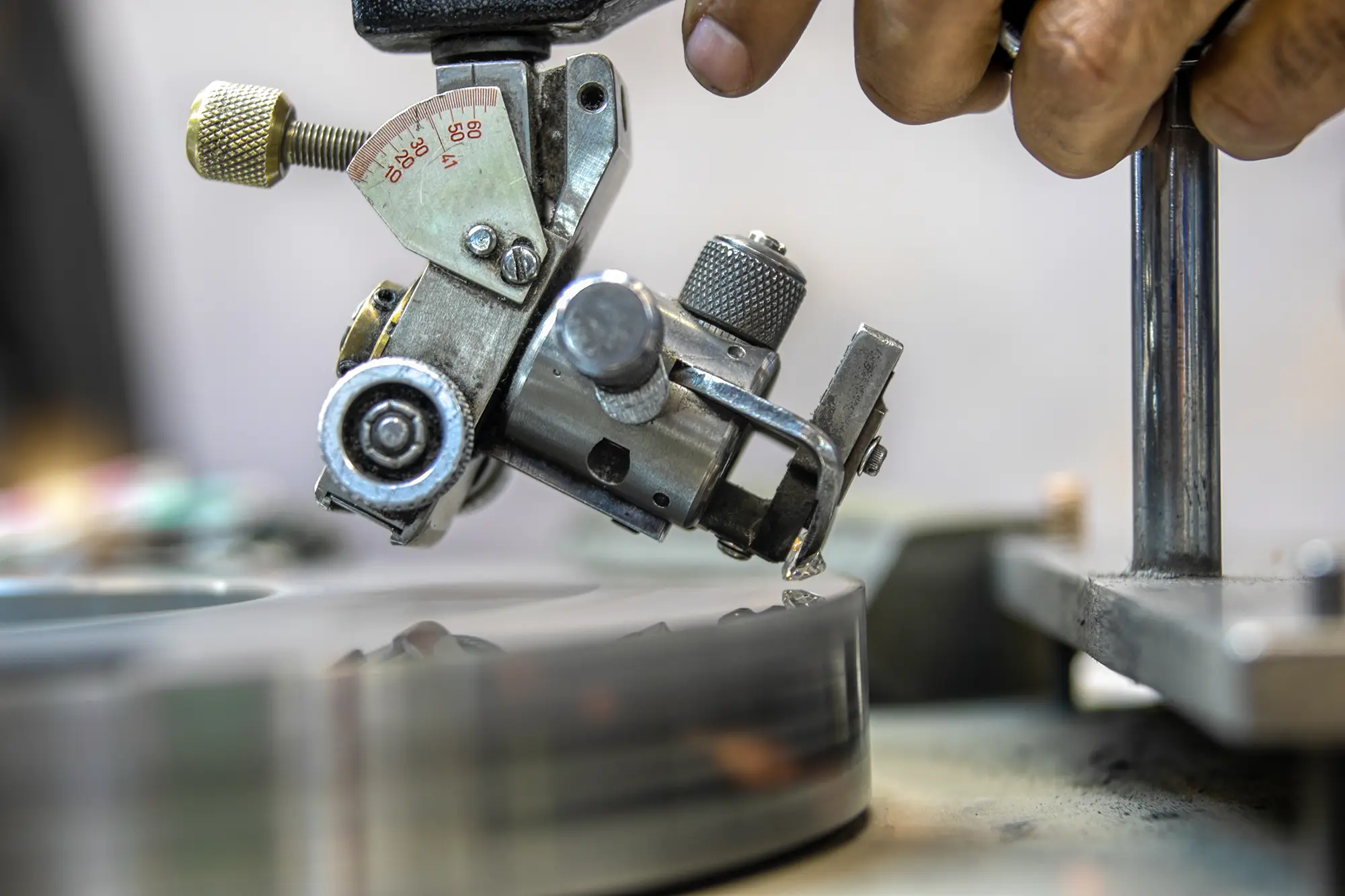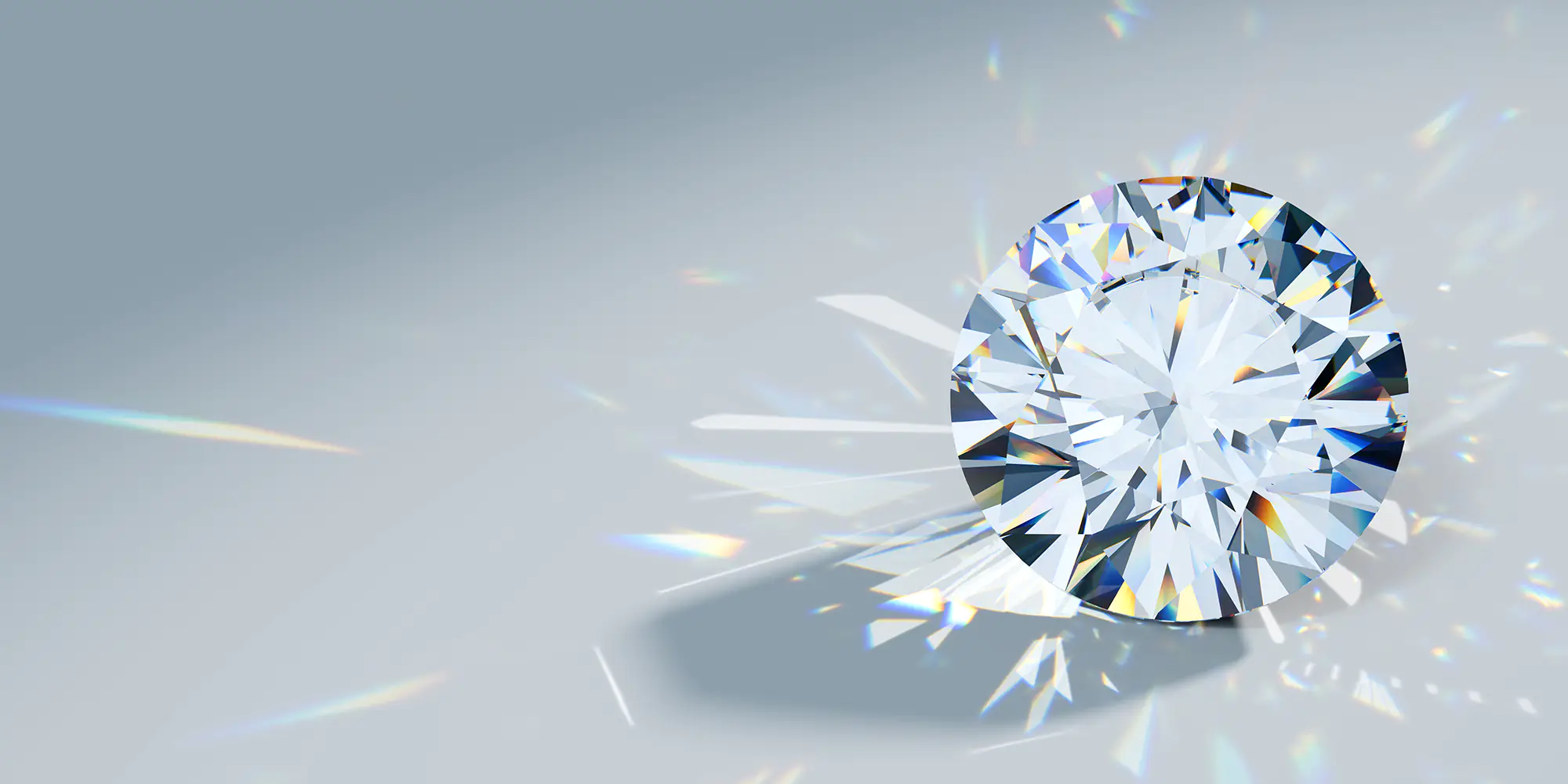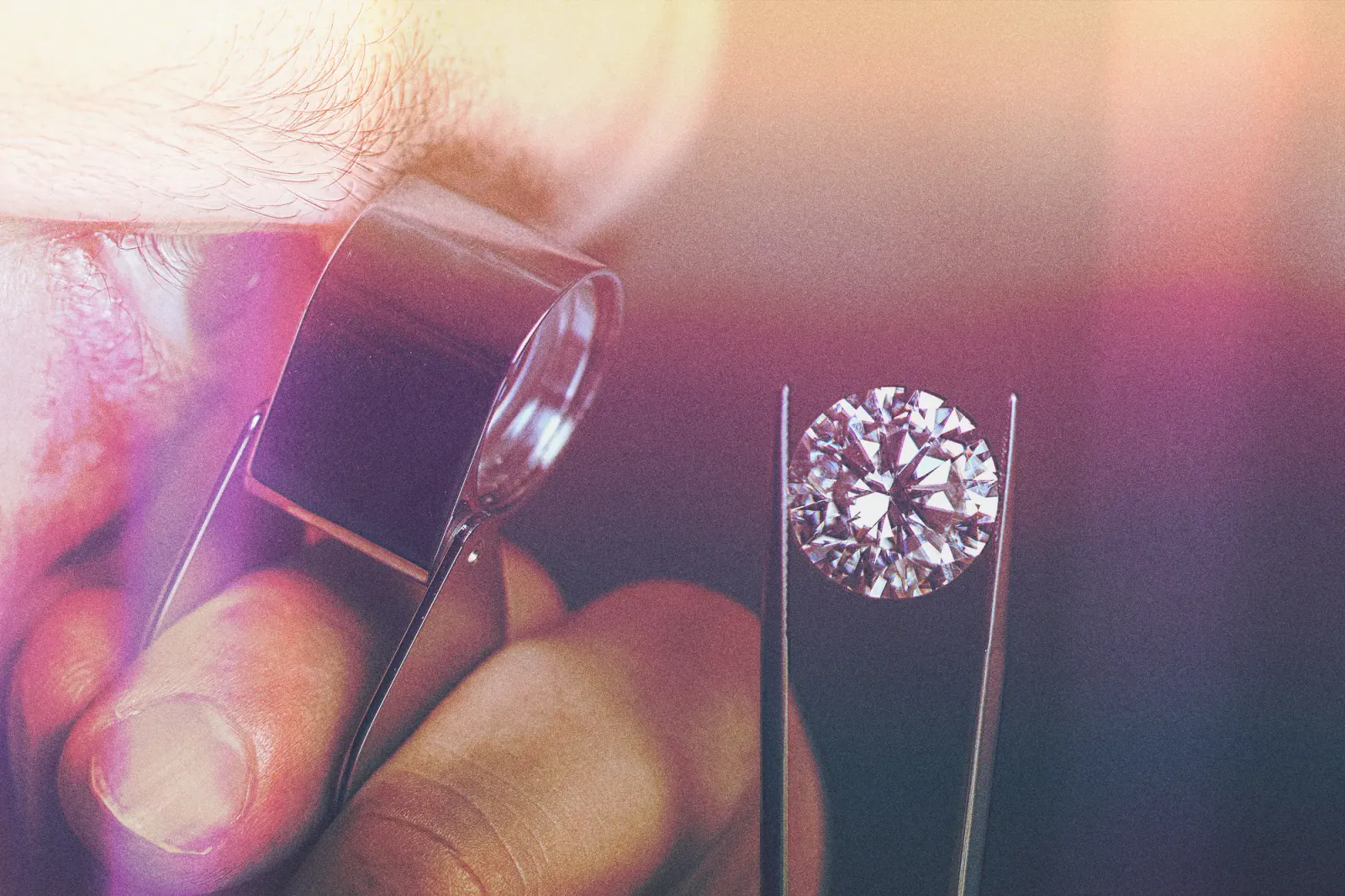Diamonds don't sparkle straight from the ground. The glassy nugget that is a raw diamond must be cut and polished so that its interaction with light dazzles and delights. More than any of the other Cs, cut determines a diamond's beauty. The facets of a skillfully cut diamond will reflect and refract light giving it its brilliance, fire and scintillation (more on that below). Therefore, when buying a diamond, it's important to understand what to look for when it comes to cut; a poorly cut diamond - even if it has a high color or clarity grade - will be dull and lifeless.
First up, cut does not refer to the shape of a diamond. That's another story. Cut refers to the proportions of the stone, geometry of the facets, and how well those facets return light. What you're paying for in the cut is human skill - whilst color and clarity are the birthmarks from how the stone formed in the belly of the earth, the cut is the fingerprint of the diamond cutters craft.

You will see a cut grade listed in your diamond certificate. The GIA set the industry standard, introducing five grades; Excellent, Very Good, Good, Fair and Poor. Within these grades, rather than checking how closely a stone matches a specific list of ideal proportions, they assess how the individual elements combine to give the diamond its design and performance. The other common scale you will see is from the AGS, rating diamonds as Ideal, Excellent, Very good, Good, Fair and Poor.
So what exactly affects cut quality?
There are both physical attributes and visual qualities to a cut which are taken into consideration by certification agencies when a diamond is graded. That's because there is no single best combination of angles and cuts to make a 'perfect' diamond. The factors graders are looking at include:
- Brightness - white light reflected back
- Fire - light dispersed into the colours of the spectrum
- Scintillation - sparkle when the diamond moves
- Proportions - such as table, width, girdle, depth
- Symmetry - consistent facets and how precisely facets intersect
- Polish - the polish of a diamond's surface

Time for an anatomy lesson...

Whilst certification bodies have differing terminology for grading cut, the different parts of a diamond are all referred to in the same way (phew!). When assessing the cut of a diamond, understanding what goes into the cut grade can really help you buy the most beautiful stone for the right price.
The proportions of a diamond's cut are what determine its beauty and brilliance. If the proportions of the cut aren't great, the light escapes through the pavilion, rather than bouncing back out, giving it a dull and dark look.

Depth: the depth of a diamond is the measurement from the table to the culet. The depth percentage is the depth divided by the girdle width. Depth not only affects how light plays in the diamond, but a cut that's too deep hides weight and will make a diamond look smaller than others of the same carat weight. The ideal depth % depends upon the shape of the diamond, but for a round brilliant numbers outside 58%-63% range should ring alarm bells. Ultimately it depends what you're after, but for the ultimate sparkle, going down a grade in color, clarity or even carat will be more than made up for if you go for a well cut diamond.
Table %: You'll notice all diamonds have a flat top. This is called the table. With an ideal cut, light enters the diamond and is refracted by the table. The rays then hit the facets, and are dispersed back out up to your eye creating the fabulous sparkle we're looking for. However, the table needs to be just the right size - too big and the facets of the diamond's crown don't disperse the light, too small and not enough light enters the diamond in the first place. So it's all about ratios - hence table % being a vital statistic. The width of the table is divided by the total width of the diamond. Different shaped diamonds have a different ideal table percentages. For a round brilliant diamond with an excellent or ideal cut it's 54%-57%, for a very good cut it's 52%-53% or 58%-60%. For a cushion cut diamond with an excellent or ideal cut it's 61%-68%, for a very good cut it's 58%-60% or 69%-70%.
Girdle Thickness: the height of the band between the crown and pavilion. A super thin, knife edge girdle is susceptible to damage, whilst an overly thick girdle is hiding unnecessary weight. In other words the diamond may be a slightly higher carat, and therefore more expensive, but if that weight is in the girdle, it's doing nothing for the stone's appearance.

Culet: the point at the bottom of a diamond where the pavilion facets meet. Sometimes it's polished off to prevent the point from chipping or getting damaged, but this can make it look like a spot below the table. Look for a culet graded 'none' but you may be okay with 'small'.
The bottom line is that of the four Cs, cut has the most impact on a diamond's beauty and sparkle. Stick to Excellent and Ideal cut diamonds, and certainly avoid anything with a Good, Fair or Poor cut grade. Even within the top grades, each diamond puts on its own unique show, so if you don't like the first one you see, keep looking and you'll find the one. Within your search criteria prioritize cut over color, clarity and carat. A perfectly cut diamond will return more white light (therefore trumping color), will help hide imperfections (therefore trumping clarity) and can make a diamond look bigger (therefore trumping carat). And that's a definite win, right?




